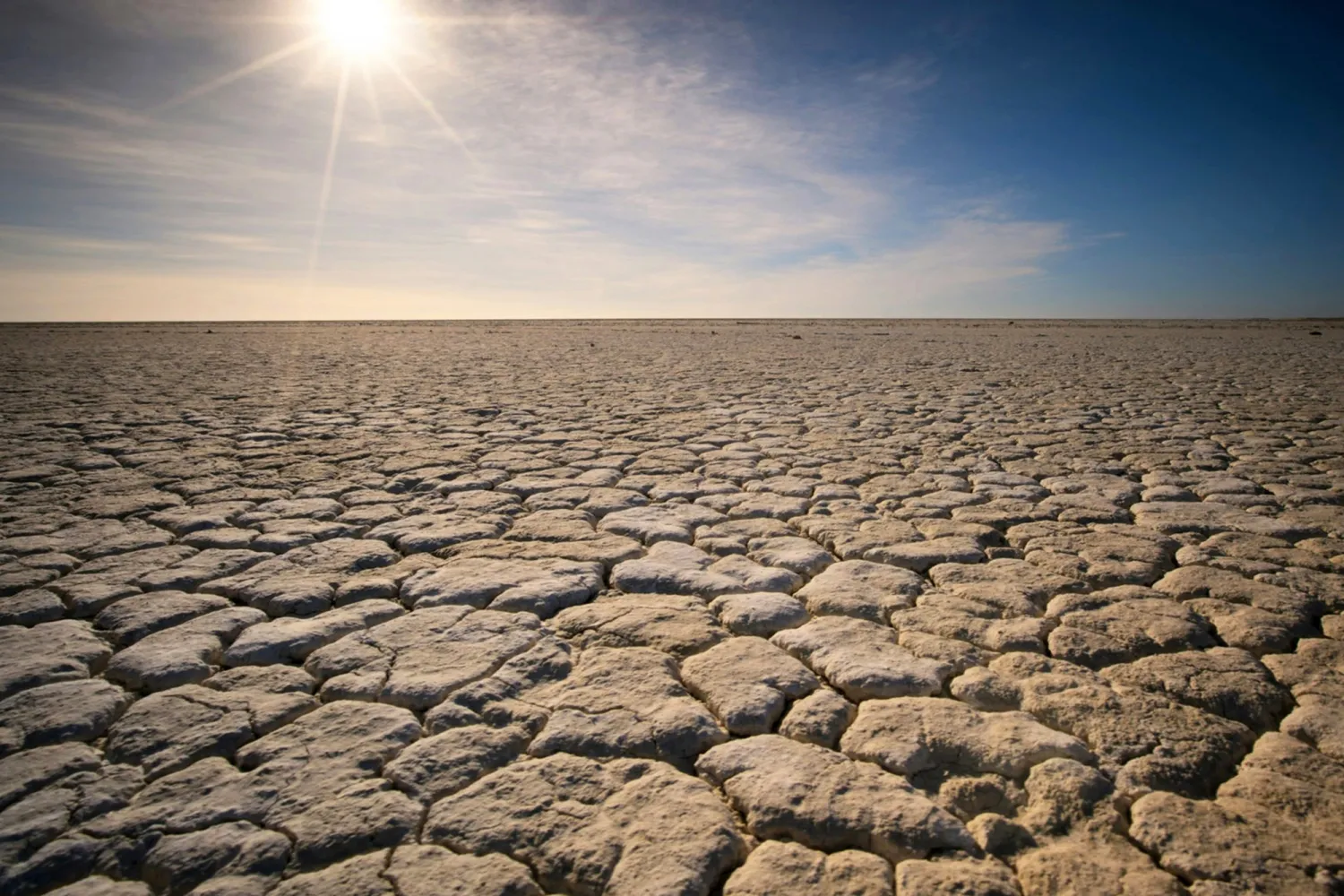Breadcrumb
Nature study from Dadson et al reveals results of ‘thirstier’ atmosphere
A new study by an international team of researchers including Christ Church’s Simon Dadson, Professor in Physical Geography at the University of Oxford, exposes the stark reality of the impact of rising global temperatures on the size and severity of droughts across the globe. Published in Nature, the paper lays bare the extent to which climate change is increasing the frequency, duration and coverage of droughts by driving up atmospheric thirst.
As global temperatures rise, it is expected that droughts will become more frequent and intense. Until now, however, while many studies have sought to predict and explain worldwide drought trends, such studies have lacked high-quality, reliable data, and have neglected the role played by atmospheric evaporative demand (AED) – that is, the atmosphere’s “thirst” for moisture. In a recent Nature article, ‘Warming accelerates global drought severity’, an international team of researchers including Christ Church Tutor in Geography Professor Simon Dadson fill this gap in the literature, and demonstrate that by making the atmosphere “thirstier”, climate change is resulting in more frequent, more severe and more widespread droughts.
The study draws on more than 120 years of high-resolution drought datasets from 1901 to 2022 to deliver the most detailed picture of drought trends to date. Where research previously has focused exclusively on precipitation levels, Professor Dadson and his co-authors have endeavoured to account for the complex physical factors determining how much water delivered to the earth’s surface through rainfall is removed through evaporation, gauging how temperature, wind, solar radiation and humidity jointly influence AED, and how increased AED has particularly intensified droughts in recent decades.
What the researchers discovered was alarming. Since the 1980s, drought has significantly intensified and spread almost everywhere across the globe (with the exception of South East Asia), and the rise in atmospheric thirst is responsible for 40% of the growth in drought severity over the four decades from 1981 to 2022. Furthermore, the research shows that AED does not merely exacerbate the severity of existing droughts – it causes them to spread over larger areas. In just the last five years considered in the study, from 2018 to 2022, the global land area afflicted by drought grew by 74%, with greater AED accounting for 58% of that expansion.
Writing for The Conversation, the study’s lead author Dr Solomon Gebrechorkos clarified the researchers’ key finding: ‘Imagine rainfall as income and AED as spending. Even if your income (rainfall) stays the same, your balance goes into deficit if your spending (AED) increases. That’s exactly what’s happening with drought: the atmosphere is demanding more water than the land can afford to lose.’ Drought is spreading and intensifying even in places where there has been little decline in rainfall – and areas that historically have been wet are experiencing drying trends.
These results will help policymakers develop resilient plans to support water, food, and energy security.
These results will help policymakers develop resilient plans to support water, food, and energy security.
While this paper’s findings are troubling and have garnered media attention – including from the New York Times – they need not be cause for pessimism. Dr Gebrechorkos and Professor Dadson both point out how a better understanding of what drives drought in specific regions can better equip us to adapt to, plan for and mitigate it. As Professor Dadson explains, ‘The real advance here is the improved spatial detail that comes from using the most up to date information. These results will help policymakers develop resilient plans to support water, food, and energy security.’
The measures we take in places where AED is the chief cause of drought may differ from the measures we take in regions where drought results from declining rainfall. Where droughts are driven by reduced precipitation, the focus ought to be on conserving and storing water. But if AED is the culprit, we should prioritise measures to limit evaporative loss – the amount of water lost from the earth’s surface and plants to the atmosphere. As Dr Gebrechorkos suggests in The Conversation, ‘This might involve planting drought-resistant crops, constructing irrigation systems that use water more efficiently, improving soil health or restoring habitats to keep moisture in the land.’
Professor Dadson, Dr Gebrechorkos and their fellow authors, then, have not only identified another consequence of the climate crisis, showing how growing global temperatures, through increasing atmospheric thirst, are accelerating the rush towards a dryer, less liveable world. They have also provided an invaluable tool to the growing number of communities who suffer from and face the threat of drought.
Professor Simon Dadson is a University Lecturer in Physical Geography at the University of Oxford and an Official Student and Tutor in Geography at Christ Church. His research focuses on climate change, hydrology and Earth surface processes, and he is the Leader of the UK Centre for Ecology & Hydrology’s Hydro-JULES Programme. Learn more about his research on his Christ Church profile.
Other Christ Church news



